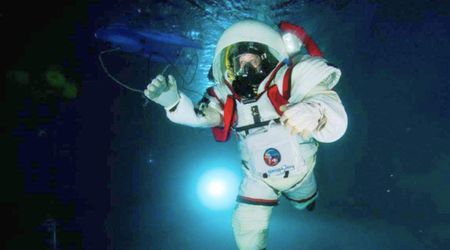NASA astronaut Chris Hadfield went 'completely blind' during a spacewalk — his response saved his life
While Hadfield was spacewalking for the first time, his eyes welled up with tears due to pain and discomfort.

While preparing for a space flight, one of the biggest lessons astronauts learn is to never give in to their fears. But what if everyday emotions experienced on Earth become their biggest enemies up there? Similarly, a seasoned space traveler’s tears could’ve led him into big trouble, potentially costing him his life. During one of his missions to the International Space Station (ISS), Canadian astronaut Chris Hadfield, who had worked closely with NASA, felt something odd in his left eye.
























